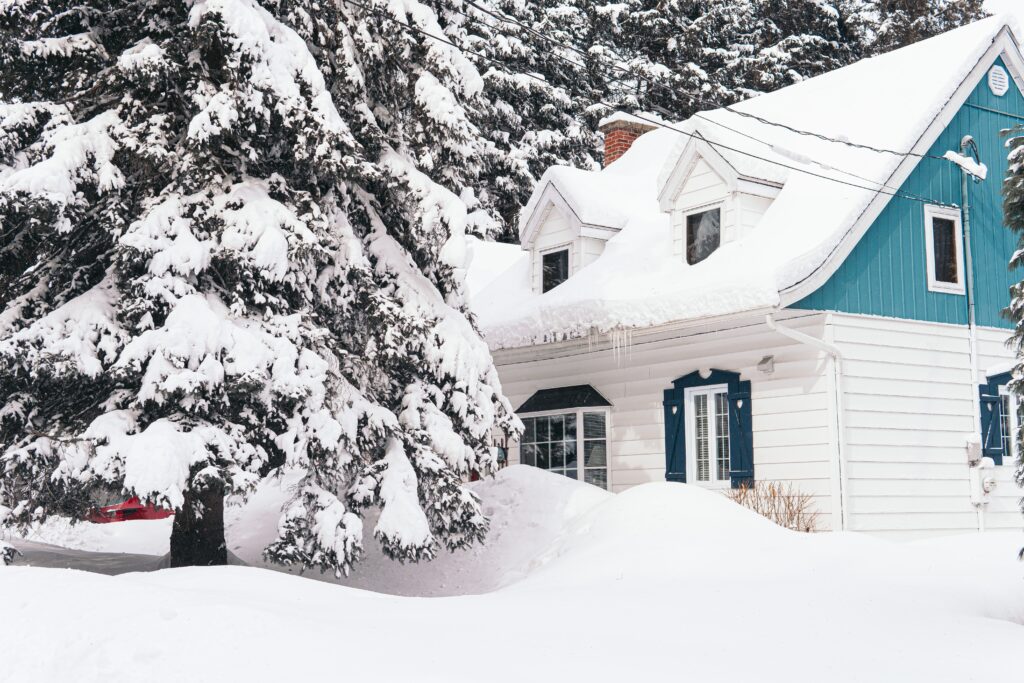Winterizing Your Investment Property

This post is written by Trusted Partner, AMRIK. To become a contributing editor, please contact our Real Estate Investor Solutions Specialist, David Maxwell at david@reincanada.com.
The quickly dropping temperatures and increased levels of snow and moisture in the air have Canadian property owners getting ready to winterize their investment properties. To ensure that their investments are well protected, they are taking the time to survey their units and make any necessary adjustments to safeguard the property’s longevity during the winter months.
AMRIK experts suggest the following proactive maintenance practices when it comes to protecting residential investments:
A Thorough Roof Examination
A simple shingle replacement or a quick roof repair can become less of a straightforward affair when you add tumultuous weather into the mix.
Before the snow and low temperatures set in, schedule some time to get the roof assessed. A roofing professional will be able to assess the overall health of your roof, ensuring that it will be able to withstand the cold and the weight of compiling snow. They’ll also be able to provide an estimate on the projected longevity of your roof which is ideal for preparing and planning for a future repair or replacement.
Clearing The Gutters
Water is the number one culprit when it comes to household damage, and clogged gutters pave the way for many exterior issues – especially in winter where snow can make it difficult to see build up.
When built up water freezes and expands, it will crack exterior gutters. This can lead to a host of problems, the most common of which are gutter damage and flooding. These are costly and time-intensive repairs, especially during the winter months where layers of snow and ice can impede the process. Owners should ensure they’re doing their due diligence by hiring a professional to clear gutters of leaves, dirt, and debris before the first big snowfall hits.
Inspecting the Furnace and Water Heater
Annual inspections are an important part of maintaining the longevity and health of a household furnace. However, it is often overlooked as it tends to fall under the common umbrella misconception of ‘if it’s not broken, don’t fix it.’
Regular professional maintenance checks and filter changes ensure that the furnace continues to run efficiently and that any potential issues are caught early. This is a proactive measure that protects an investment property and helps curb potential expenses from more serious issues developing later down the line.
A pre-winter check on the water heater is also good practice to ensure the unit is in good condition. Many hydro companies will offer yearly inspections free of charge. As a homeowner, all you’re required to do is make the call and set up the appointment.
Being proactive on both fronts can spare you a big repair, and an even bigger bill, down the road.
Sealing Interior and Exterior Cracks
Whether it’s a hole in the exterior of the property, or worn sealant around the doors, windows, or vents, prioritize fixing it as soon as possible. Gaps offer easy ways for heat to escape the unit which can lead to structural deterioration, pipe problems, and sky-high heating bills.
Holes can also be an entranceway for critters looking to escape the cold, so it’s important to have everything sealed by the time winter rolls around. Pest problems pose an immediate health and safety concern to those living on the property, and are also expensive and time-consuming to remedy.
If your unit has a driveway, make sure that any noticeable crevices are being filled in with concrete sealer. Water can get into these cracks and freeze during the winter which can cause them to double or triple in size. This will hurt the structural integrity of the driveway and will lead to large and costly repairs.
Turning Off and Draining Outdoor Faucets/Sprinklers
With the temperature dropping, it’s important to turn off all external water and to drain all spouts and sprinkler lines on the investment property. Allowing water to freeze inside the lines can not only cause structural malfunctions come the spring thaw, but can also lead to burst pipes, underground flooding, and serious property damage.
All lines should be empty before temperatures start dropping below freezing.
Take time to address any uninsulated/exposed pipes on the exterior of the unit. These should be covered with foam sleeves or professionally insulated to prevent them from rupturing come the winter.
If you’re interested in real estate investment but are unsure about how and where to start, the professionals at AMRIK would be more than happy to help. For a quality experience with the leaders of the real estate industry, reach out today.




